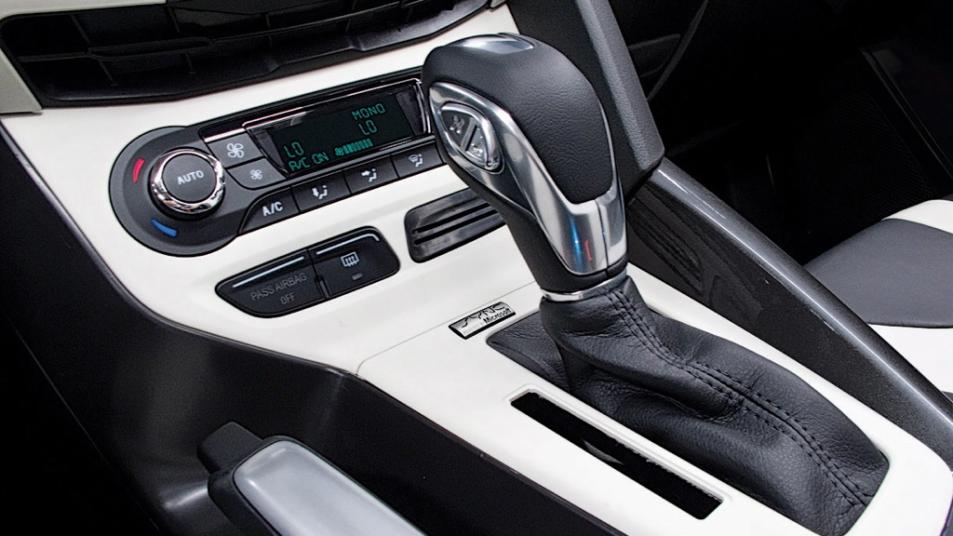Pros: Superior fuel economy, acceleration and responsiveness when properly tuned.
Cons: Pricey; can be clumsy at low speeds and when parking.
Summary: If you’re shopping for a car and you see the term “automated manual transmission” (or sometimes “automated-clutch manual transmission”), it refers to a transmission that’s mechanically similar to a stick-shift, except a computer performs the clutch work.
To be clear, an automated manual transmission (AMT) doesn’t have a clutch pedal; there’s only an accelerator and a brake pedal, just like a regular automatic. And if you leave an AMT in D mode, it basically performs like an automatic transmission — all you have to do is worry about when to start and when to stop.
Accordingly, some AMT drivers may actually believe they’re driving a traditional automatic. But there are some important differences that informed car shoppers should be aware of.
For background, there are two types of AMTs: single-clutch and dual-clutch. Single-clutch AMTs are older, lurch-prone and generally unpleasant; the good news is that only the smart fortwo and some exotic sports cars use them. Dual-clutch AMTs, on the other hand, are designed to eliminate lurching, and the best units provide incredibly quick yet perfectly smooth shifts. Most AMT-equipped cars use dual-clutch technology.
AMTs also tend to yield better fuel economy and acceleration than regular automatics. The reason is that AMTs are more efficient; that is, they allow more of the engine’s energy to flow directly to the wheels. For the same reason, stick-shifts have historically edged automatics in both categories. The magic of the AMT lies in its ability to combine the fuel economy and performance of a true manual with the everyday convenience of an automatic.
AMT downsides are few but notable. First, the technology is complex, so you’ll pay more up front — and if the transmission goes bad out of warranty, you could be on the hook for an expensive repair bill. Also, engineers haven’t quite worked out low-speed AMT behavior yet, so when you’re nosing the car into a parking space, for example, you’ll likely notice a “slip-and-surge” effect that’s like being in a stick-shift car with a teenager learning to drive.
But overall, the AMT is a clear victory for automotive progress. We expect this transmission type to become increasingly popular as costs come down and consumers embrace its numerous advantages.
What it means to you: A thorough test drive is in order if you’re considering an AMT-equipped vehicle, as transmission behavior can vary widely among automakers. But given the AMT’s considerable upside, we encourage you to consider adopting this technology in your next car.
Related Transmission Articles:
Editor’s Note: This article has been updated for accuracy since it was originally published.











Probably the biggest benefit of this is that you can have one hand free for your beer.
Automated Manual Transmission https://wimanual.com
Car CHEYNEY WE with AMT dose not operate the egine
P.s, the car company actually took the car back and gave me a full refund because they couldn’t get the dodgy dual clutch system to work properly
So what’s your opinion now about that slip and surge that also happens when you’re trying to merge into traffic coming at 85KM/ph and have had 3 clutch replacements in as many years and multiple transmission computer reprograms and engine malfunctions without warning?
Can I drive an AMT car with an automatic license?
What is an automatic license?
AMT’s are very noisy and jerking on lower speed.
I just drive mine as an automatic, mostly, so not to worry lol. Still can use paddle shifters
“slip-and-surge” doesn’t sound like a minor problem, esp. if you’re trying to parallel park. This technology may in fact be better than other even more crappy automatic transmissions, but if its introduction leads to the removal of the completely superior technology of a stick shift and clutch, then that is not “progress”. It is regress.
IF you think a stick shift and clutch is “superior technology” you must really love to have to use the clutch even when stuck in heavy commuter traffic. I love driving a manual on an interstate or out in the open country, but in heavy urban traffic constantly having to use the clutch gets old in a hurry. I do much more of the latter than the former, so I get a car with an automatic. I will downshift into a lower gear to get engine braking to save my brakes. Lots of people think you never manually downshift an automatic, which is stupid. I have a 2007 Buick Lucerne which has a very smooth 4 speed automatic. I downshift to third or second on steep downhills. Parallel parking is easy.
It not yet clear to me, what I want to ask that in amt system is it just fit on the transmission or there are also changes inside in the transmission, similar like 1970s honda 50cc motorbike gears which do not hv clutch & gear can change without pressing of clutch…
Is there a shifter where are u have to do is push up to change the gear down then push down to change the gear up ??
i would suggest u to watchhttps://www.youtube.com/watch?v=UrlAeGG8izY
Its called a Dog Box or a Sequential gearBox. Mostly used in rally cars
hi josh, really great to read your review about the AMT and was technically explained pretty well….considering your academic background.
coincidently, i am working with a company that is currently manufacturing these AMT’s and its great to see and read about the various applications of this product.
it definitely has taken a lot of technical know how to come to such a conclusion….and to have a vehicle, manual transmission WITHOUT a clutch is simply superb.
although slower speeds are not yet studied in detail, i doubt it will be that much of a problem in parking spaces.
but hey…great reading your review….do stay in touch….not sure how.